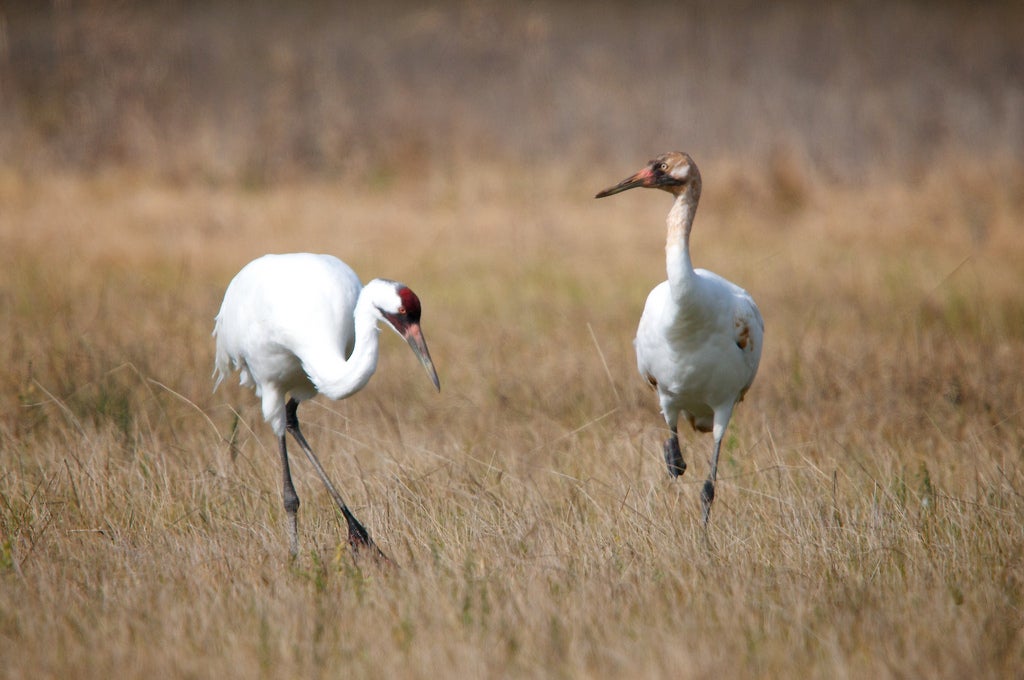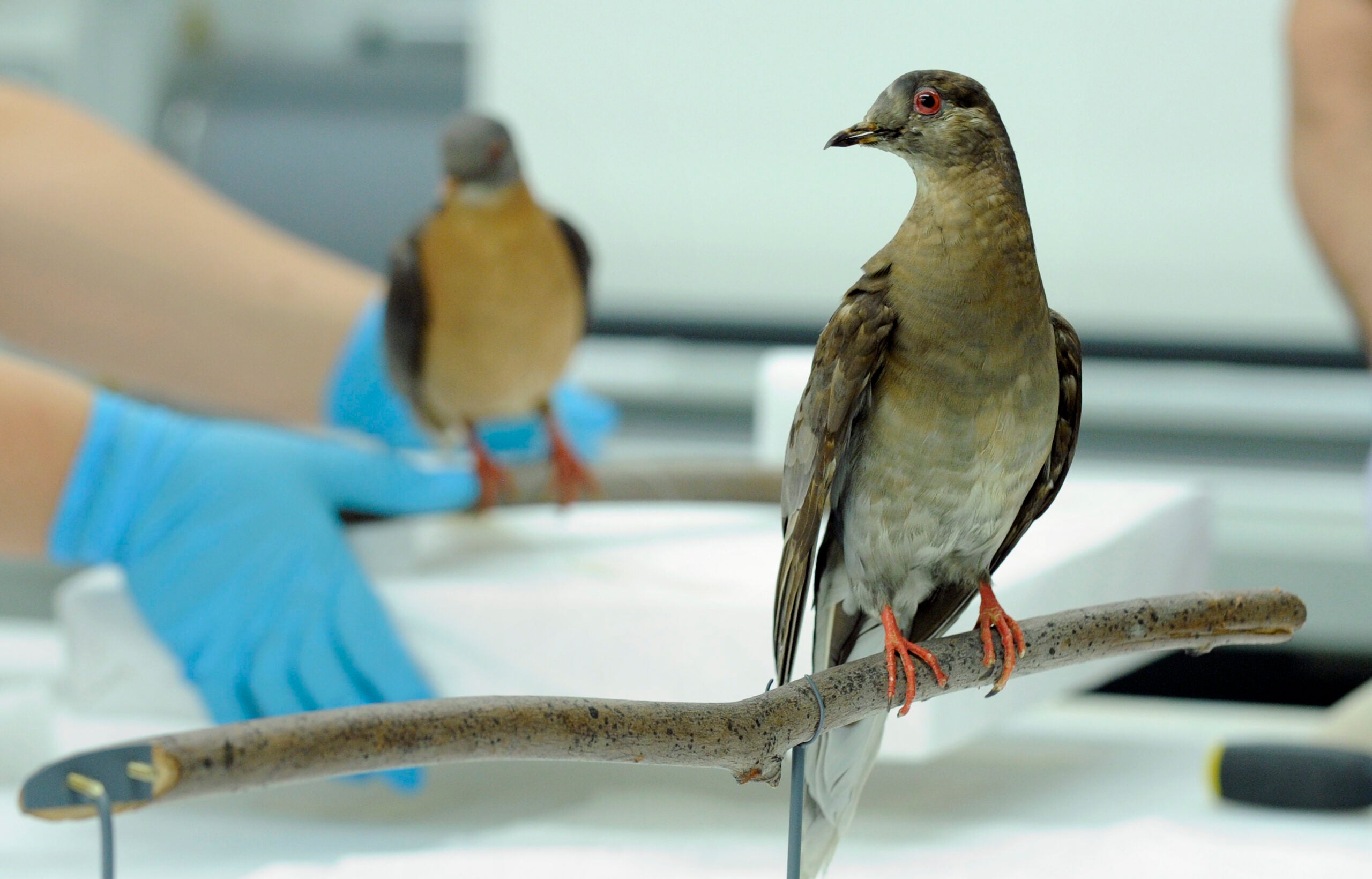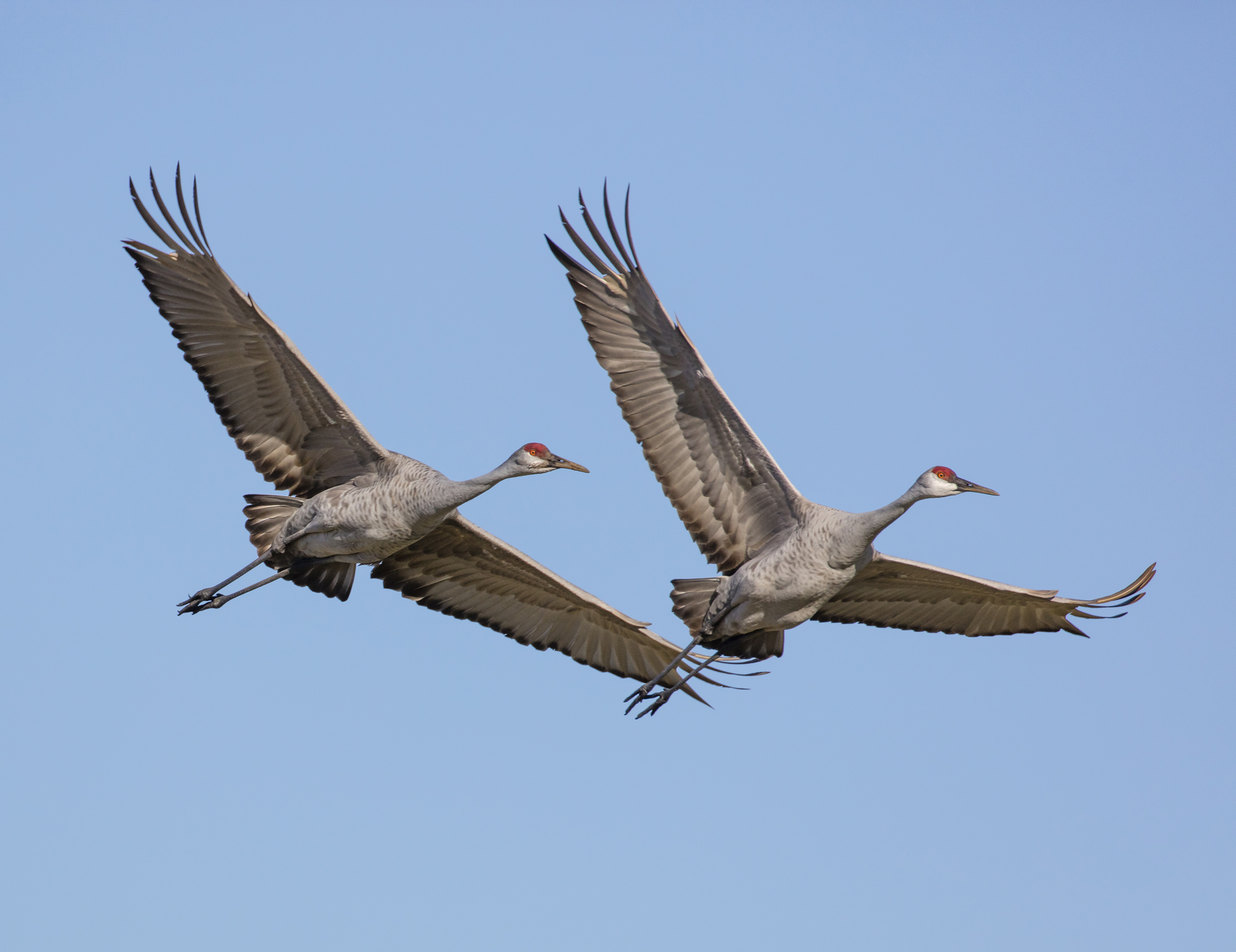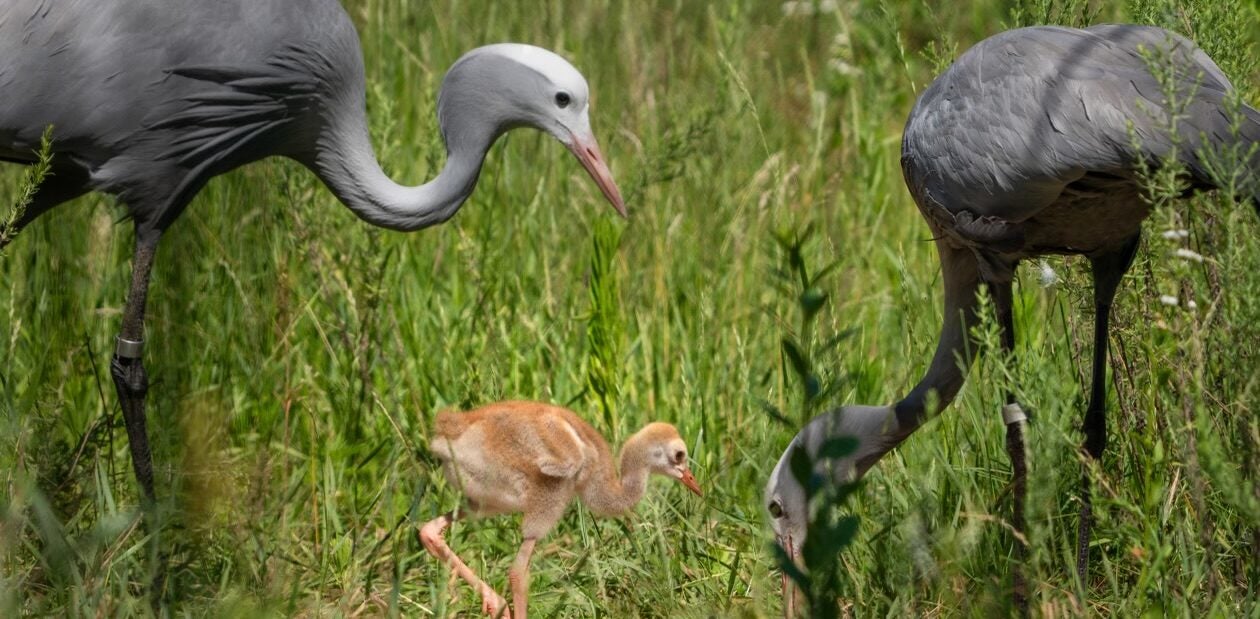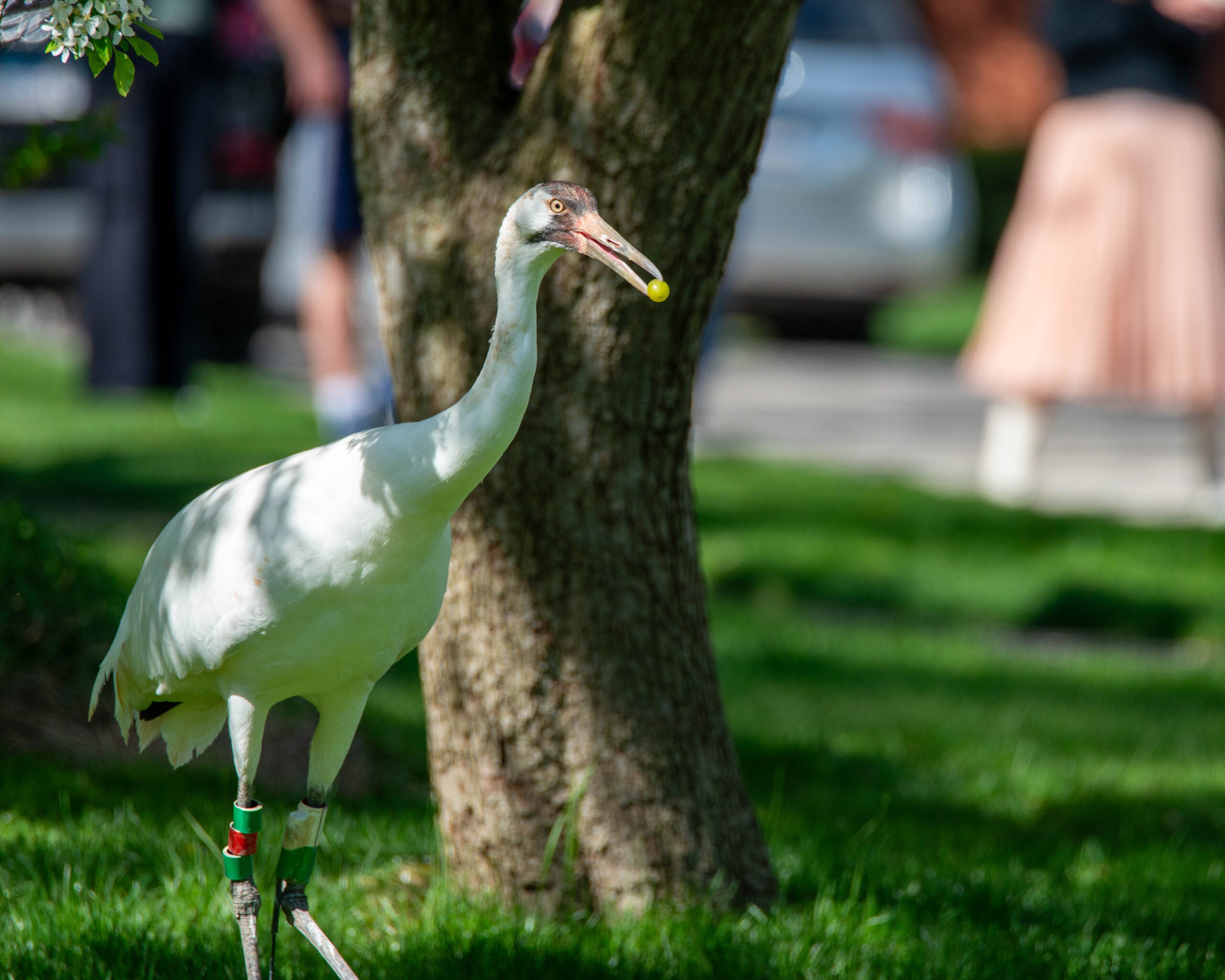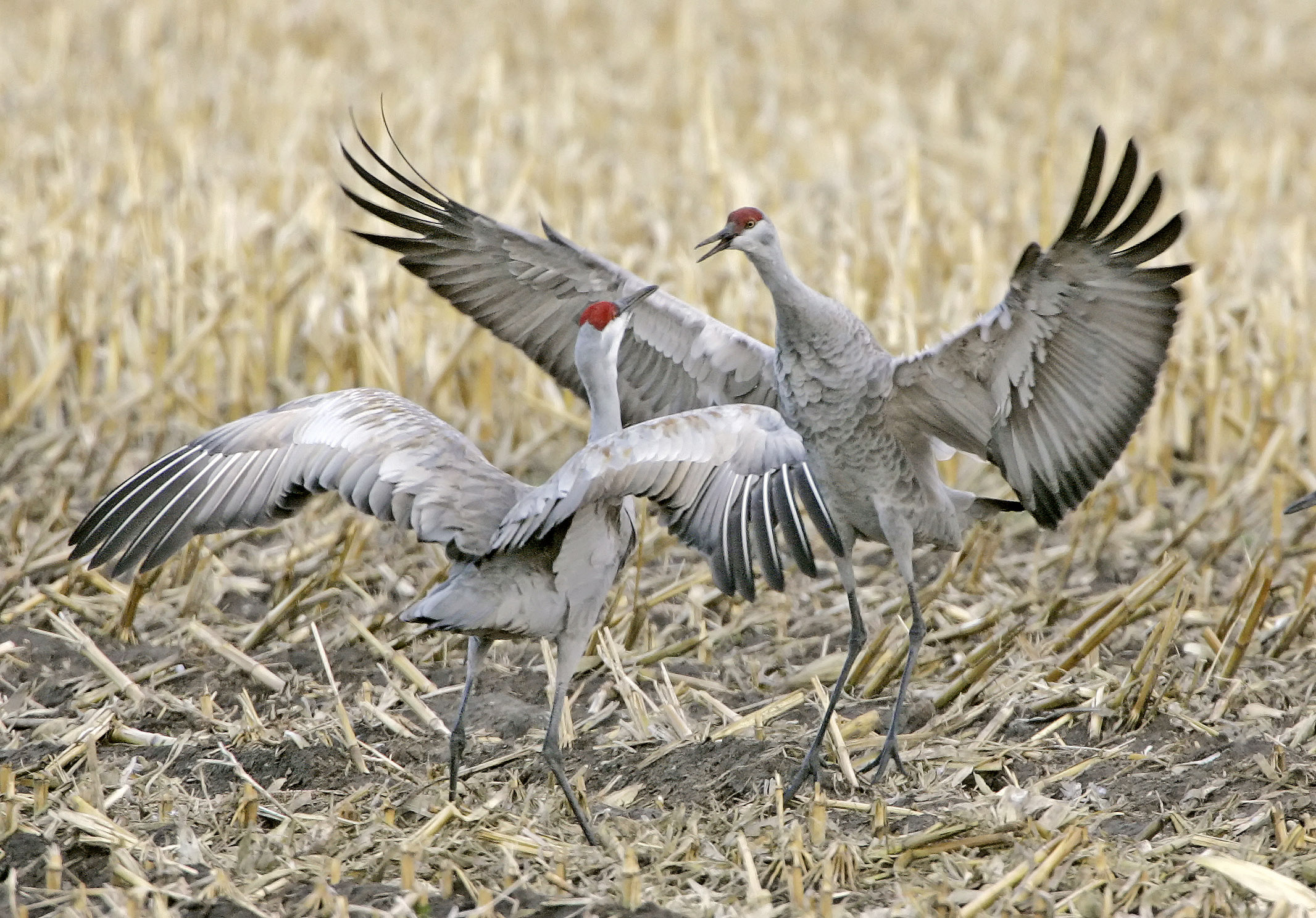Researchers say a major change in the whooping crane reintroduction effort in the eastern United States is working so far, but it will take a few years to know if the goal of improved crane chick survival is achieved.
Last fall was the first time in a 16-year crane reintroduction program that humans in costumes didn’t help train crane chicks to migrate south behind ultralight aircraft. Instead, with humans observing remotely, adult cranes raised 12 chicks at a national wildlife center in Maryland and at the International Crane Foundation near Baraboo.
The foundation’s Anne Lacy explained that the chicks were then placed with other adult cranes in the wild in central and eastern Wisconsin.
Stay informed on the latest news
Sign up for WPR’s email newsletter.
Predators killed three chicks, but Lacy said, “It’s hard to say what led up to that. There was a thought that one might have been exhibiting a sign of illness, or it might have been seen as lethargic – not flying very strongly. So that may have made it easier to be predated.”
Lacy said the remains of the dead birds are being analyzed.
Eight other chicks have flown south with adult whooping cranes or sandhill cranes. One chick hatched and raised by adult cranes at the Crane Foundation and released into the wild did not fly south. So in mid-December, researchers drove the crane, named Bryce, to the Wheeler National Wildlife Refuge in Alabama.
Bryce was soon seen in the company of another whooping crane released by ICF last fall that successfully made her migration earlier in December.
Lacy said she hopes the new training procedure continues.
“I think the lesson here is to stay the course,” she said. “To really believe in the body of knowledge we have in these institutions.”
Lacy added that it won’t be known if more cranes successfully reproduce until the young birds sexually mature in about three years.
The Whooping Crane Eastern Partnership will hold its annual meeting about the crane program at the end of January.
Wisconsin Public Radio, © Copyright 2024, Board of Regents of the University of Wisconsin System and Wisconsin Educational Communications Board.
